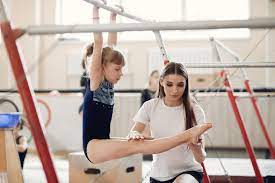The early years of a child’s life are all about discovery—learning how to move, explore, focus, and connect with the world around them. Sport, when introduced in the right way, supercharges that process. It’s not about winning or being the best—it’s about learning how to move confidently, listen to instructions, work as a team, and have fun while doing it.
And there’s no better entry point than gymnastics for kids.
This article breaks down five clear benefits of getting kids involved in sport early, using gymnastics as a prime example—while also exploring how that movement foundation opens doors to other activities, like tape ball indoor cricket.
1. Physical Development Starts Strong
Children grow rapidly in their early years, and structured sport helps that growth happen in a healthy, balanced way.
Gymnastics teaches:
- Gross motor skills (running, jumping, rolling)
- Fine motor skills (gripping, hand coordination)
- Core strength, flexibility, and spatial awareness
In a single class, kids might crawl through tunnels, walk on beams, climb, swing, and tumble—all in a safe, padded environment. These activities build muscles, joint mobility, and bone strength.
According to Raising Children Network, gymnastics is particularly effective at improving coordination and balance in young children—skills that transfer into almost every sport they might try later.
Early physical development also sets the tone for lifelong healthy habits. Kids who move confidently are more likely to stay active as they grow.
2. Social Skills Take Root
In their first years of sport, kids learn how to:
- Take turns
- Listen to instructions
- Encourage peers
- Follow a routine
- Celebrate others’ efforts
This happens naturally in gymnastics for kids. While the activity might look individual (e.g. a child on a beam or mat), the group setting is highly social. Children cheer for each other, rotate through stations, and participate in group games.
They also learn how to regulate emotions—like frustration when something is tricky or excitement when they succeed. These are big emotional lessons wrapped in small movements.
The result? Kids build confidence, friendships, and resilience in a playful, low-pressure setting.
3. Focus and Learning Improve
Sport sharpens focus. It helps kids learn how to pay attention to details, follow step-by-step directions, and repeat actions with slight adjustments—just like they do in school.
In gymnastics, this could look like:
- Learning how to point toes during a jump
- Holding a shape during a roll
- Listening for a whistle or cue before moving
Each of these moments supports cognitive development. It’s learning through doing.
Children also begin to understand cause and effect: “If I try again and stretch my arms, I’ll land it better.” That mindset—try, reflect, try again—sets them up for learning in all areas.
Structured sports like gymnastics for kids create strong habits that translate directly into classroom focus, persistence, and listening skills.
4. Early Sport Builds Confidence That Lasts
Few things are more powerful for a child than the realisation that they can do something they couldn’t do before.
Whether it’s their first forward roll, balancing on one foot, or holding a bridge, gymnastics gives kids clear, achievable goals. Every new skill mastered feels like a win.
Confidence grows not just through praise, but through action. When a child sticks a landing, climbs a rope, or leads a warm-up, they carry that self-belief into everything else.
Parents often report that kids who join gymnastics for kids are more willing to try new things at school, on the playground, or in other sports—like tape ball indoor cricket, which combines movement with teamwork and communication.
5. It Opens the Door to Other Sports
Starting with gymnastics doesn’t mean staying there forever. In fact, many coaches and physical educators agree that gymnastics is one of the best “starter sports” for young children.
Here’s why:
- It develops transferable skills (agility, balance, body control)
- It promotes flexibility and strength that helps with injury prevention
- It builds the confidence to enter team-based sports later
Kids who begin with gymnastics often move easily into dance, athletics, martial arts, or field sports. That might include more structured school sport—or even social options like tape ball indoor cricket, which offers a fun, low-pressure way to stay active and develop hand-eye coordination.
Starting young makes the transition smoother—and often means kids are more open to trying different activities without fear of failure.
Real Story: How Gymnastics Kickstarted Sam’s Sports Journey
Sam, 5, was shy and hesitant to join any group activity. His parents signed him up for a recreational gymnastics class with the hope it might “get him moving.” He spent the first few sessions observing. No pressure. Just watching.
By week four, he was rolling on the mat, climbing mini apparatus, and smiling while high-fiving the coach.
A year later, Sam was more confident, more social, and more willing to try new things. He later joined his school’s soccer program—and even tried a junior tape ball indoor cricket class. His parents credit that early exposure in gymnastics for making sport something he now enjoys rather than fears.
Final Thoughts: Movement Is the Gateway to Growth
When kids start sport early, they don’t just build physical skills—they build a mindset. A mindset of persistence, play, connection, and courage.
Gymnastics for kids is one of the most effective and enjoyable ways to start that journey. It creates strong movers and confident learners, and it sets the foundation for a lifetime of active choices.
From tumbling on mats to taking their first swing at bat, the early years matter. And sport—when introduced with care, fun, and encouragement—is one of the best gifts we can offer.

